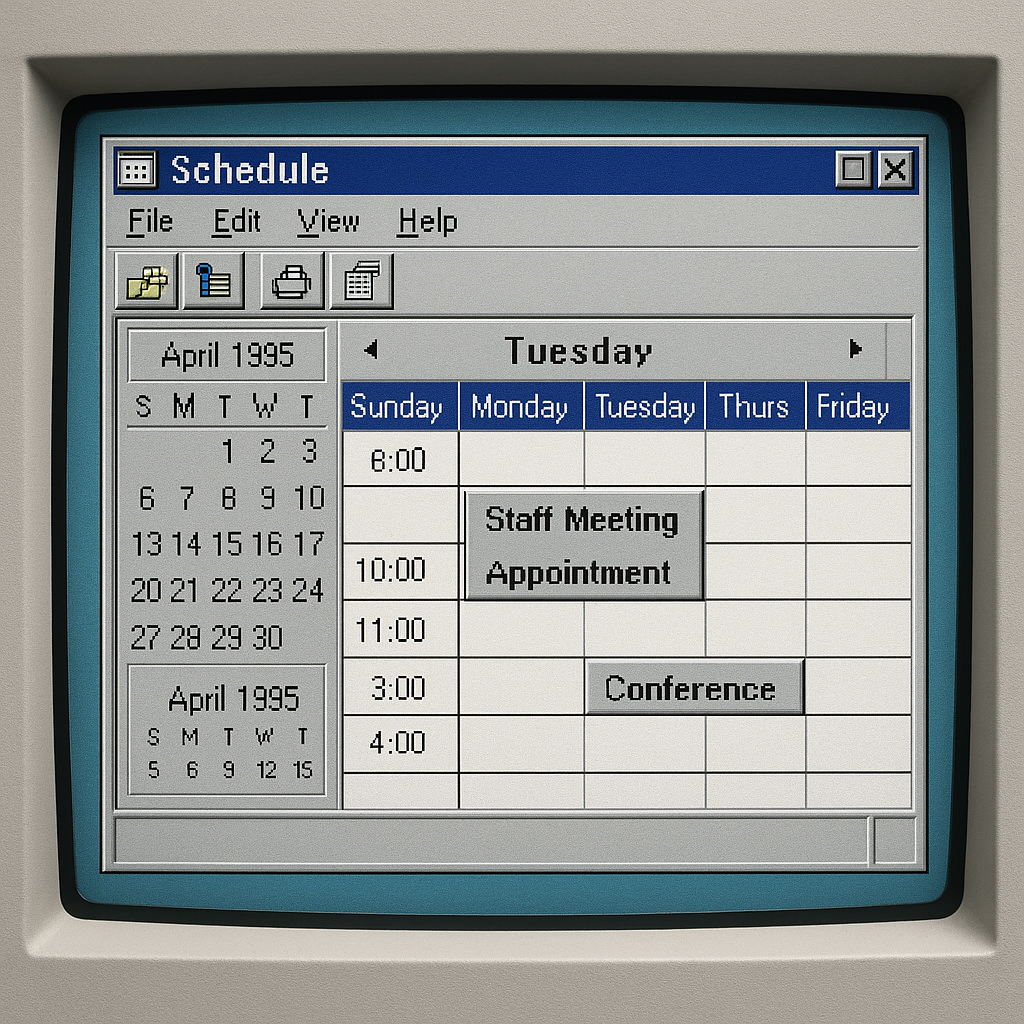It’s a familiar story in many organizations. Your scheduling system has been around for so long that no one remembers who implemented it or why it was set up the way it was. The team has learned to adapt to its quirks and limitations, developing a series of process band-aids and clunky workarounds just to get through the day. While the system appears to be functioning, there's a persistent, nagging feeling that you're bleeding time, resources, and opportunities.
Many institutions hesitate to switch from their legacy system, fearing disruption, cost, or potential staff resistance. However, the risks of staying put are often overlooked and can compound over time, costing more financially, operationally, and strategically than making a change. The dangers of inaction are not always immediately apparent, but they are real and can quietly undermine your organization's success.
Below is what that looks like in practice.
TL;DR Key Takeaways:
- Many scheduling systems were built for a different era and no longer adequately supported.
- Technological transitions have historically been disruptive, but Mazévo makes it easy.
- The challenges of switching are far outweighed by the risks of staying on an outdated system.
- Understanding eight critical risks of not switching can help inform your decision.
Declining Support and Responsiveness
When something breaks or you have a critical question, you need help, and you need it fast. With many scheduling software companies making strategic shifts toward cloud platforms, on-premises customers may find themselves deprioritized, facing slow or unavailable support.
When critical issues go unresolved, your team loses trust in the system, forcing them to create manual workarounds that consume valuable staff time and increase the risk of errors that can impact your customers and your reputation.
Staff Turnover and the Erosion of Institutional Knowledge
The people who originally implemented and understood your legacy scheduling tool may be long gone. As a result, your team might be using the system in a limited or unproductive way.
This erosion of institutional knowledge means that your scheduling processes are stuck in the past. New team members don't receive proper training, and bad habits accumulate, resulting in reduced efficiency, inconsistent processes, and a lack of accuracy in scheduling.
Expensive Training
Even if you want to improve how your team uses your current system, the training is often costly and difficult to schedule. This means that staff members are left to just "get by" with what they know rather than fully leveraging the system's capabilities. Over time, this creates more manual work, fosters inconsistent processes, and increases the risk of mistakes that directly affect your customers' experience.
Antiquated Systems in a Modern World
Many scheduling systems were built for a different era. In their day, they may have been very effective, and the companies behind them may have provided attentive customer support. Today, however, it’s often a different story.
Those companies may be under new ownership, and their systems tend to be showing their age, especially when compared to more modern, user-friendly scheduling solutions. Plus, the support provided for outdated systems often ranges from unavailable to ineffective. Consequently, you and your team waste valuable time navigating a clunky interface, relying on outdated processes, and struggling with integrations and accessibility. Even worse, it becomes increasingly difficult to attract and retain staff who understandably expect modern, intuitive tools that help them work efficiently and effectively.
Questionable Vendor Alignment with Your Needs
The strategic direction of many scheduling software providers may no longer align with your organization's approach and objectives. Feature development may be slow or driven by enterprise goals rather than the feedback and needs of customers like you.
This leaves you investing in a system that isn't investing in you. In the long term, this can put your operations at a significant disadvantage as your peers adopt more responsive and innovative platforms.
Postponing Change Creates Bigger Problems Later
Every year you stay with an outdated system, the gap between where you are and where you need to be grows wider. Eventually, you will have to migrate. However, by then, your data, workflows, and staff may be even more difficult to transition. Delaying the inevitable only makes the process more costly, disruptive, and painful in the long run.
Flexibility Without Simplicity Can Hold You Back
Some legacy systems are highly flexible. However, that flexibility can come at a high cost. Taking full advantage of a system’s capabilities can require extensive training, deep institutional knowledge, and ongoing configuration work. As a result, many organizations never fully unlock their tool’s full potential.
As staff turnover occurs and training budgets tighten, your processes stagnate, and workarounds emerge. In time, this makes it increasingly difficult to keep up with the growing demands and rising expectations of stakeholders who expect fast, intuitive, and modern tools.
Rising Costs and Diminishing Returns
Annual support costs for many legacy systems can be significant, yet their customers report struggling to reach knowledgeable support staff when it matters most. At the same time, meaningful enhancements to these systems are often limited.
This means you are continuing to pay for a scheduling tool that isn't improving in ways that benefit your organization. Without a clear return on your investment, the cost of staying becomes harder to justify each year.
Staying on an Outdated System Is a Risky Roll of the Dice (But Switching to Mazévo Is Easy)
The decision to switch from an older system is not a small one, but the risks of inaction are too significant to ignore. The hidden costs of declining support, eroded knowledge, and antiquated technology can create a drag on your organization that is far more damaging than the temporary disruption of a system migration.
By proactively addressing these challenges, you can position your organization for greater efficiency, improved staff and customer satisfaction, and long-term success. It's time to stop patching the old system and start building a better future with a simple, streamlined transition to a leading-edge, web-native scheduling solution.
If you would like to discuss the risks of staying on your outdated system and the rewards of switching to Mazévo, contact us today or schedule a demo.



